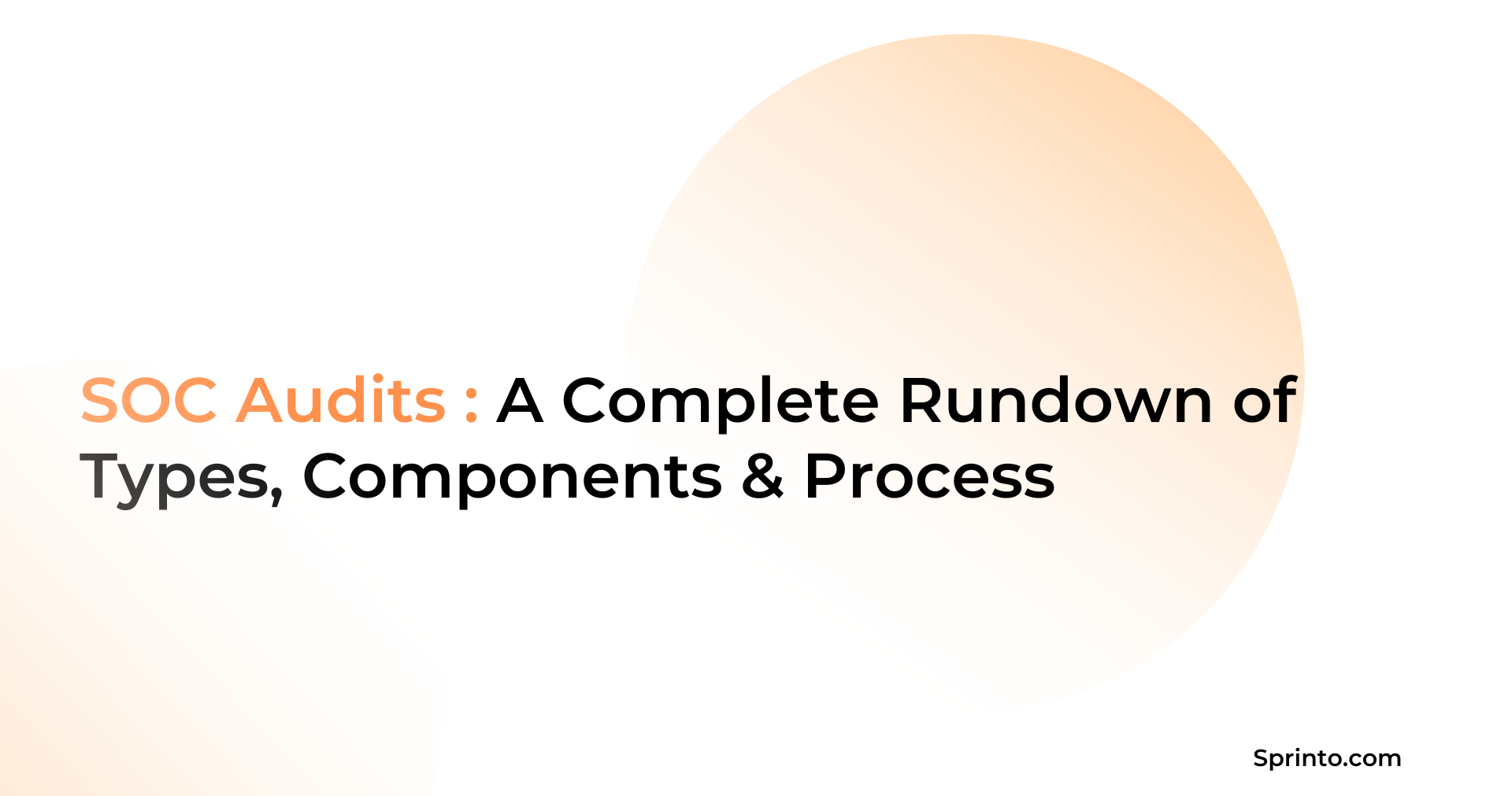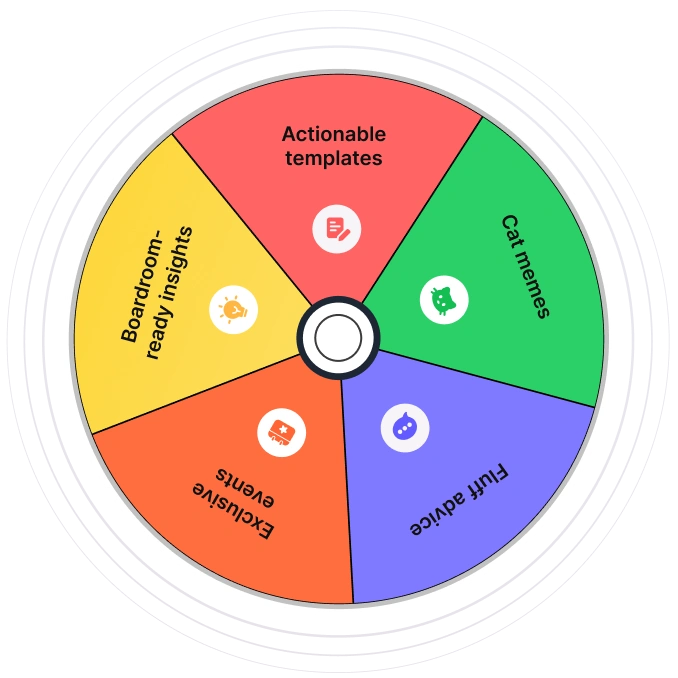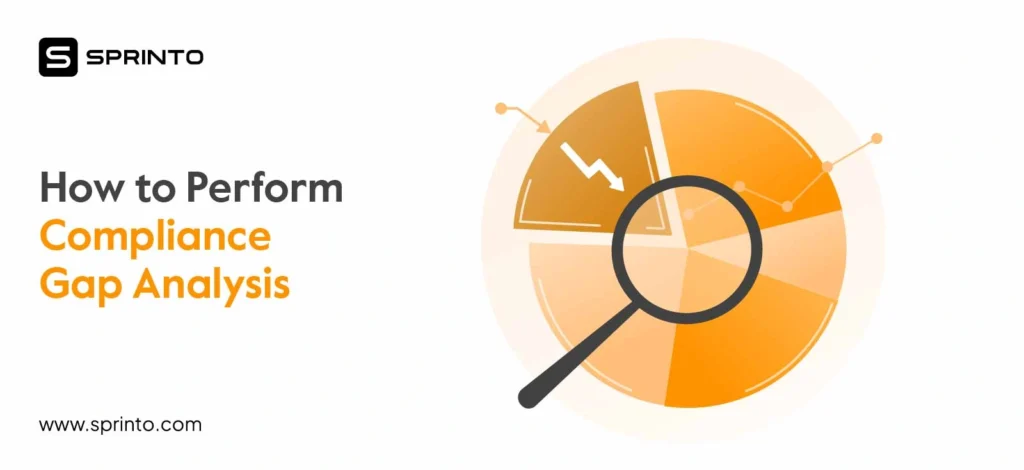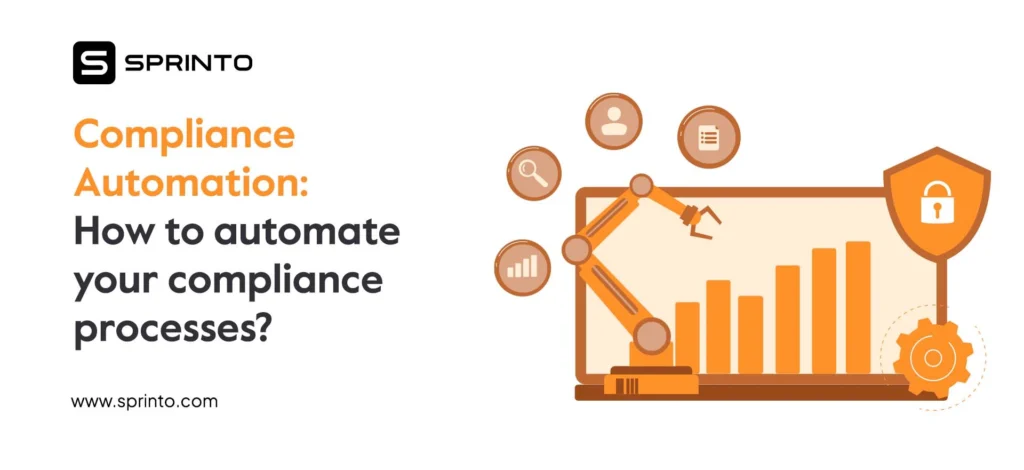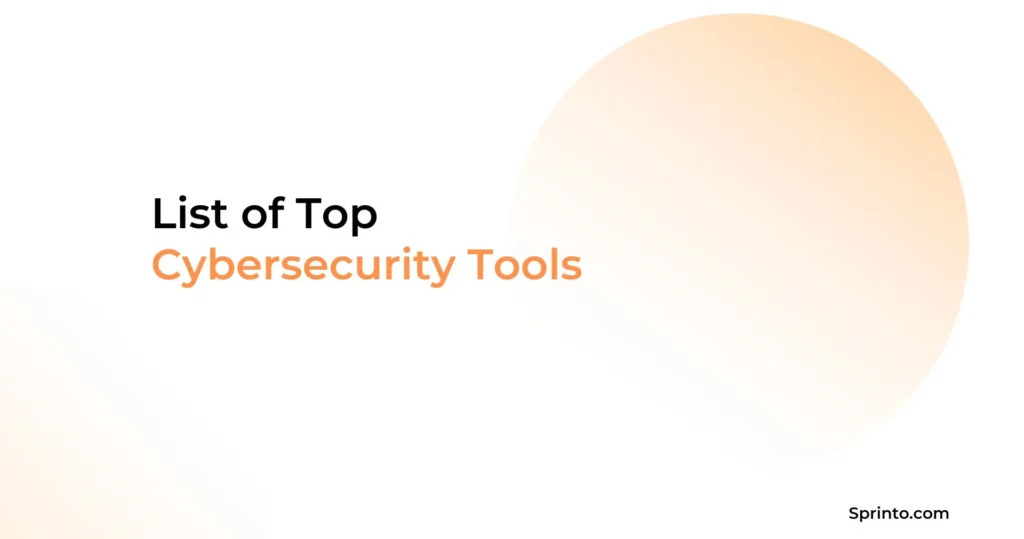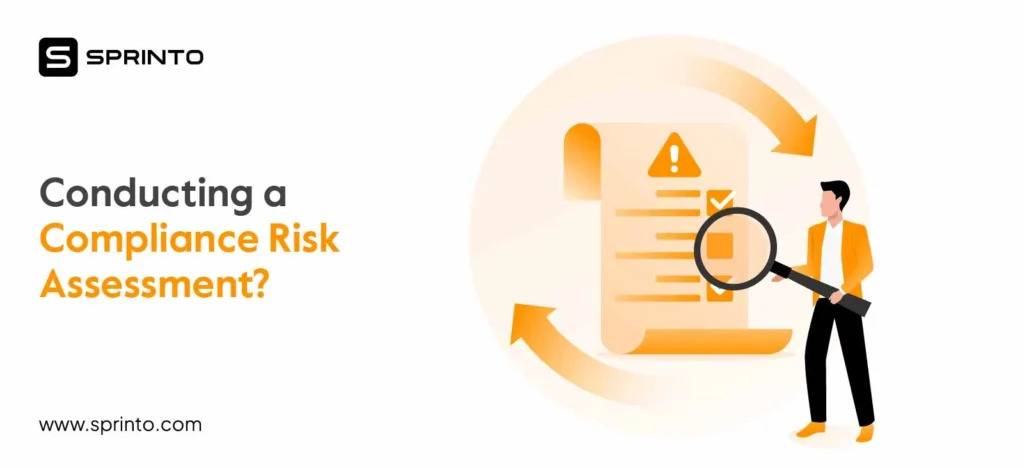When it comes to protecting your business, a SOC audit is your secret weapon. It’s no longer enough to rely on cloud services and third-party vendors without having airtight security controls.
With the rising stakes in data protection, SOC audits have become a vital tool to not only meet compliance but to build trust with customers and partners alike. It can set you apart, showcasing your commitment to security in a world where trust is everything.
| TL;DR SOC reports are categorized into SOC 1 (financial controls), SOC 2 (security, availability, etc.), and SOC 3 (public-facing). Effective SOC audit preparation includes determining the audit scope, selecting the right SOC report, performing a readiness assessment, collecting evidence continuously, etc. Automation streamlines the SOC audit process reducing the time required and curbing compliance drift, ensuring a clear audit trail. |
What is a SOC audit?
A SOC audit or Service Organization Control audit is a thorough third-party assessment of a service organization’s internal controls related to data security, availability, processing integrity, confidentiality, and privacy. Its goal is to demonstrate customer trust and commitment to protecting sensitive information.
SOC audits were developed by the American Institute of Certified Public Accountants (AICPA). They provide a standardized framework for evaluating and reporting on the effectiveness of a service organization’s controls.
What are the three types of SOC reports?
SOC reports fall into one of three types: SOC 1, SOC 2, and SOC 3. SOC 1 focuses on financial reporting controls, SOC 2 assesses operational controls related to security, availability, confidentiality, processing integrity, and privacy, and SOC 3 is a simplified, public-facing version of SOC 2 without detailed technical or confidential data.
Here’s an overview of all the key categories and their respective types:
1. SOC 1
SOC 1 reports mainly focus on internal controls related to financial reporting. These reports are relevant for organizations that deal with clients’ financial statements and store sensitive information regarding them. There are two types of SOC 1 reports you get audited for:
- SOC 1 Type 1: The Type 1 report assesses the design and implementation of the internal controls at a single point in time. The audit for the Type 1 report is less comprehensive and time-consuming.
- SOC 1 Type 2: In the Type 1 report, the audit is carried out for a period of 6-12 months typically. These reports gauge the operating effectiveness of the controls continually and hence are more detailed and time-consuming.
2. SOC 2
SOC 2 reports extensively look at the internal controls related to security, availability, processing integrity, confidentiality, and privacy of data in your organization. If you fall in the technology or cloud computing service industry, these reports are very relevant for you.
SOC 2 reports are divided into two categories similar to SOC 1:
- SOC 2 Type 1: Similar to SOC 1 Type 1, this audit is meant for technical reporting controls. Checks the overall structure and design of internal controls at a given point in time.
- SOC 2 Type 2: SOC 2 Type 2 reports examine the operating effectiveness of non-financial reporting controls over time, usually spanning over six to twelve months.
3. SOC 3
The SOC 3 report is a public-facing report that provides a high-level overview of a company’s controls. Keep in mind that it is not a mandatory report but it’s good to have if you’re into Services, SaaS businesses, B2C, or B2B2C.
The SOC 3 report demonstrates the effectiveness of your access controls and the associated Trust Services Criteria (TSC).
4 must-have components of a SOC audit
The structure of a typical SOC audit report consists of four main components:
- Auditor’s report
- Management assertion
- System description
- TSC and test of controls
Depending on the type of SOC report you’re opting for, the components can vary a little but the overall structure in most reports remains the same. Type 1 reports may contain less details as compared to Type 2 reports.
Furthermore, SOC 3 reports usually do not contain system descriptions, tests of controls, or evidence since they provide an overview for public consumption.
Let’s understand the components in detail.
1. Independent service auditor’s report
This section involves the auditor’s opinion regarding two significant areas, which are: the systems description provided by the service organization as to whether such a description is fair and the controls suitable and operating with designed effectiveness to meet relevant Trust Services Criteria (TSC) and Cloud Controls Matrix (CCM) criteria.
2. Management’s assertion
The management assertion is a formal statement from the management of the service organization that affirms the accuracy of the system description and the operational effectiveness of the controls throughout the audit period.
3. System description
The system description describes, in detail, the infrastructure of the service organization, services, and controls, including the hardware, software, personnel, and procedures to run the system. It also clarifies how these elements are interconnected to ensure effective service delivery and adherence to internal controls.
4. TSC and tests of controls
The report explains all the detailed tests conducted by the auditor to establish whether the controls are effective in operation. These tests measure the degree to which the controls give assurance on the stated security, availability, processing integrity, confidentiality, and privacy criteria of the Trust Services Principles.
7 key steps to prepare for a SOC audit
A SOC audit is a critical process that requires careful planning and execution. The journey begins with determining the scope of your audit and finally ends with communicating with the SOC auditor directly.
Here are seven steps you can follow to prepare your business for the SOC audit.
1. Determine your scope
A good scoping practice can save you up to 20% of costs according to a KPMG report.
Start by creating a comprehensive list of all systems, services, and locations that handle client data in your organization. You can consider using data flow diagrams to visualize and define boundaries effectively.
2. Select the appropriate SOC report
Once you’ve defined the scope, the next step is to select the appropriate SOC report. This decision should be entirely based on your client’s requirements and your business objectives.
You have three main options here: SOC 1 for financial reporting controls, SOC 2 for security, availability, processing integrity, confidentiality, and privacy, and SOC 3 for public-facing reports.
Note
SOC 2 reports are increasingly popular, with the American Institute of Certified Public Accountants (AICPA) reporting in 2023 that 74% of companies prefer them due to their comprehensive security focus.
3. Perform a readiness assessment and address gaps
Based on the SOC report you’ve chosen for your audit, conduct a readiness assessment or gap analysis. For example, if you’ve chosen to go forward with SOC 2 compliance, here’s a ready assessment checklist that will pertain to this step.
Download your SOC 2 assessment checklist
Once you have a clear understanding of what’s missing, plan to address the weaknesses or incomplete controls. Prioritize these gaps based on their risk and potential impact on audit success.
4. Document everything: policies and procedures
Documentation is a cornerstone of SOC compliance. While this process can be time-consuming, it’s well worth the effort.
Create or update documentation for all in-scope controls, including your information security policy, access control procedures, change management process, incident response plan, and business continuity and disaster recovery plans.
5. Collect evidence
Evidence collection should not be taken as a point-time activity but rather a continuous process. This can only be achieved through a compliance automation tool that integrates with your current infrastructure to pull evidence from various sources.
Aim to maintain evidence for at least six months prior to the audit period. This approach not only ensures you’re prepared but can also save significant time.
6. Train your employees
Develop role-specific training programs based on the type of SOC compliance you’re opting for. Cover topics such as an overview of SOC requirements, individual responsibilities in maintaining controls, and proper documentation and evidence-collection procedures.
Sprinto provides you with built-in security training and awareness modules where you can track completion rates and hold quizzes to understand its effectiveness. You can also customize it according to your preferences and target particular groups.
7. Engage an auditor
When it comes time to engage an auditor, choose carefully. Research and select a qualified CPA firm with SOC audit experience, considering factors such as industry expertise, client references, audit approach and methodology, and communication style.
Gartner’s 2022 Critical Capabilities for IT Risk Management Solutions report states that 85% of businesses that engage specialized auditors report higher satisfaction with audit outcomes.
Fastrack your SOC compliance audit
Who Performs SOC Audits?
SOC audits are performed by independent Certified Public Accountant (CPA) firms licensed by their respective state boards of accountancy. These firms must adhere to the AICPA’s standards for performing such engagements.
If you’ve integrated with a GRC tool for your SOC compliance process, then get in touch with them to find out which firms they partner with.
In most cases, as in Sprinto, you can choose from a readily available list of auditors who will go through the evidence in the platform itself. This streamlines the audit process by automating evidence collection, significantly reducing back-and-forth communication.
Plus, in the Sprinto app, the auditor gets a dedicated Auditor’s dashboard for better operability.
What is the cost of expert SOC audits?
The cost of SOC audits depends largely on the type of audit your organization wants to conduct. There are other internal factors in play, like the complexity of your systems, the scope of the audit, and the level of support required. Here’s a cost breakdown for the different types of SOC audits:
| SOC Report Type | Typical Cost Range |
| SOC 1 | $7,000 – $20,000 |
| SOC 2 | $10,000 – $60,000 |
| SOC 3 | $5,000 – $50,000 |
Note: The above numbers are industry estimates and the actual cost depends largely on your organization’s scope and current security posture.
What are the challenges faced in SOC audits?
SOC audits often face common challenges, such as slower stakeholder buy-in, large costs, limited resources, and the implementation of control requirements. Here are five areas where businesses usually slow down:
1. Manual processes: From Mapping controls, to company policies, and documents, collecting evidence, to conducting training, audits are slowed down when done manually.
2. Limited internal expertise: Teams are often not equipped with the knowledge or expertise required to carry out audits, causing confusion and unpreparedness.
3. Ongoing control monitoring: For SOC 2 Type II in particular, maintaining compliance over time (usually 3–12 months) is challenging, especially without automated control monitoring.
4. Issues with integrations: Integrating security tools, HR systems, cloud infrastructure, and other key platforms for evidence gathering and control testing can be technically challenging.
Conducting SOC audits the smart way with Sprinto
SOC audits are time-consuming, resource-intensive, and frustrating if you do it the manual way. In fact, if it’s done manually (most commonly using spreadsheets), it would take you almost a year to get all the controls right before an audit.
Plus, what if something goes wrong or there is an incident? Compliance is not a single-point-in-time or checkbox activity, you need to be constantly aware of any anomalies or control failures in real-time.
A similar problem was faced by Anurag Prabhakar, CISO at MoveInSync:
“I looked for a system that could alert me before anything fails, to help us remediate issues preemptively. With Excel, you can’t do that,”
Sprinto’s automated, time-sensitive alerts enabled MoveInSync to detect compliance drift early and resolve issues before any checks were compromised. This proactive approach was instrumental in helping MoveInSync maintain a flawless compliance posture throughout their SOC2 Type 2 audit.
“Sprinto automated more than 90% of our compliance tasks. This not only freed our team’s bandwidth but also enabled us to complete months’ worth of work in days.” – Anurag Prabhakar.
Ditch tedious spreadsheets for adaptive automation to breeze through SOC compliance. Sprinto will map risks to SOC controls and run fully automated checks to ensure continuous compliance and to breeze through your SOC audit.
Automate SOC Compliance Effortlessly
Frequently Asked Questions (FAQs)
1. Who needs a SOC audit?
Organizations that manage customer data, particularly service providers like SaaS companies, need SOC audits to assure clients and stakeholders of their data protection controls. SOC reports help build trust by demonstrating security and compliance practices.
2. What is a SOX audit, and how is it different from SOC?
A SOX audit focuses on ensuring financial reporting accuracy for public companies, while a SOC audit evaluates data security and control practices at service organizations. SOX is mandatory for public companies, whereas SOC is required for service providers managing sensitive data.
3. Who issues SOC reports?
Only licensed Certified Public Accountants (CPAs) authorized by the American Institute of CPAs (AICPA) can issue SOC reports following a thorough audit.
4. Do all companies need to comply with SOC?
No, SOC compliance is typically required for companies that provide outsourced services handling sensitive data (e.g., SaaS, cloud providers). Not all businesses need SOC reports unless they manage data on behalf of other organizations.
5. What is SOC 1 vs SOC 2?
SOC 1 specifically examines financial reporting controls and is designed for service organizations that impact their clients’ financial statements (like payroll processors or loan servicers). SOC 2, on the other hand, focuses on operational and compliance controls related to security, availability, processing integrity, confidentiality, and privacy of a system.
Pansy
Pansy is an ISC2 Certified in Cybersecurity content marketer with a background in Computer Science engineering. Lately, she has been exploring the world of marketing through the lens of GRC (Governance, risk & compliance) with Sprinto. When she’s not working, she’s either deeply engrossed in political fiction or honing her culinary skills. You may also find her sunbathing on a beach or hiking through a dense forest.
Explore more
research & insights curated to help you earn a seat at the table.



